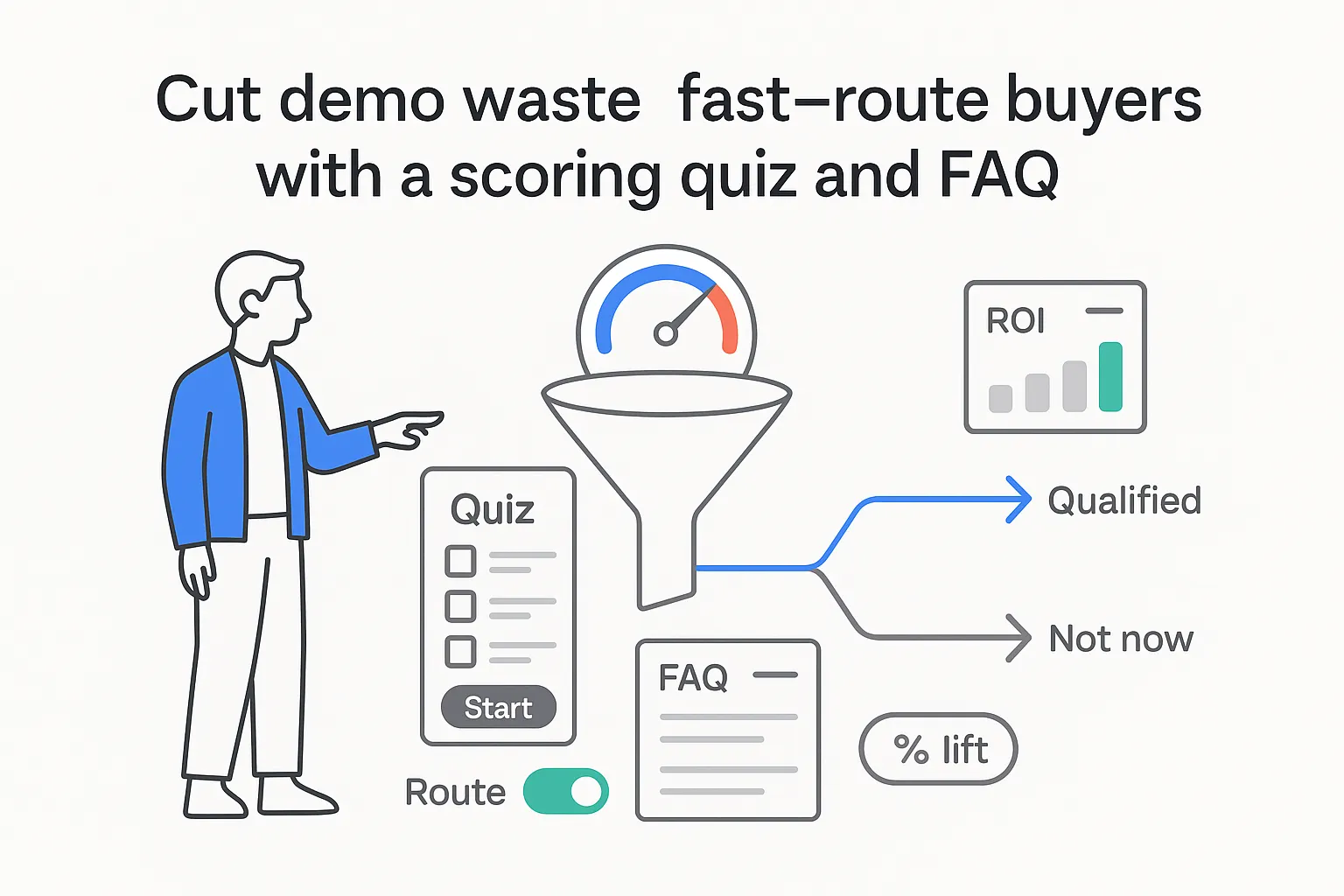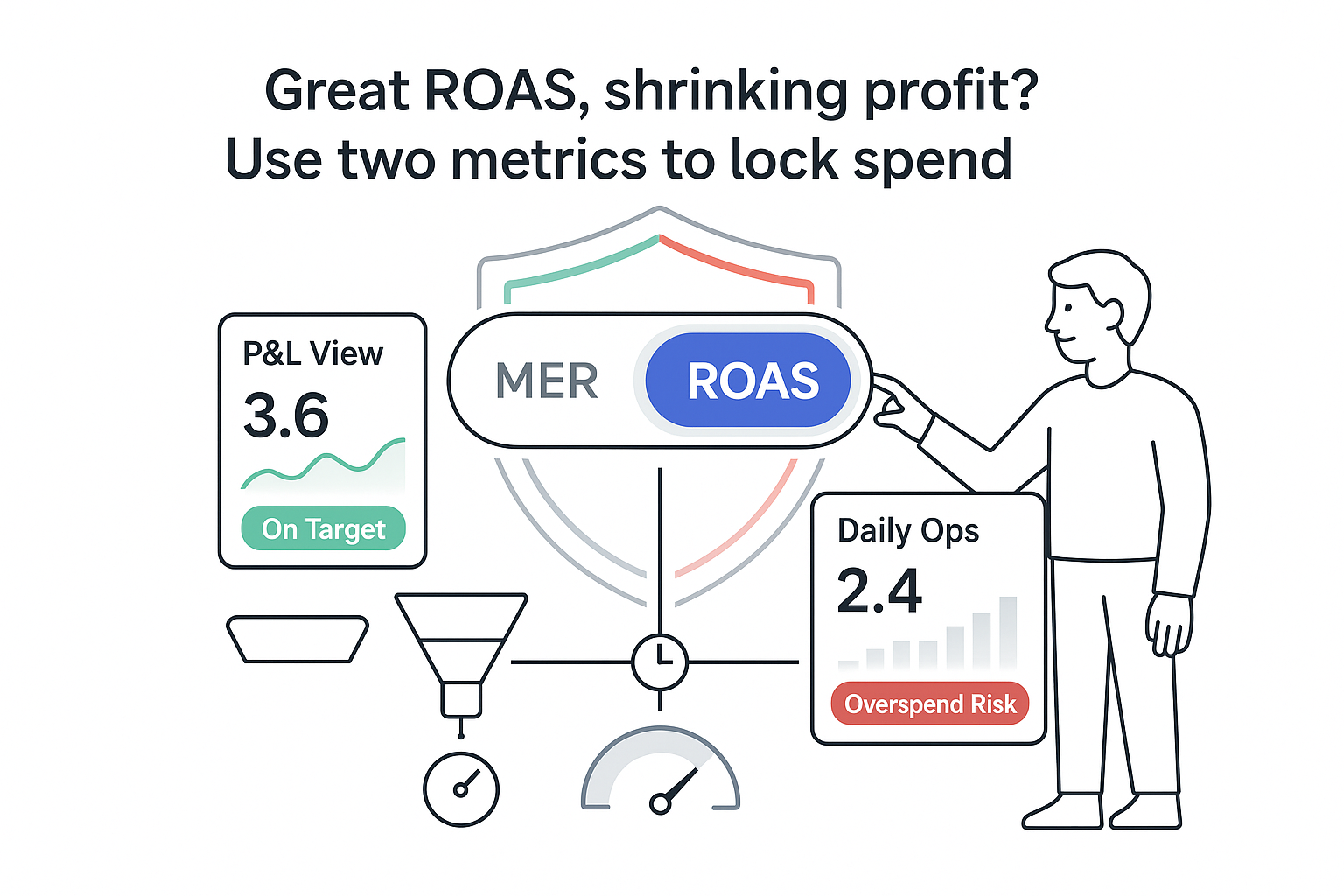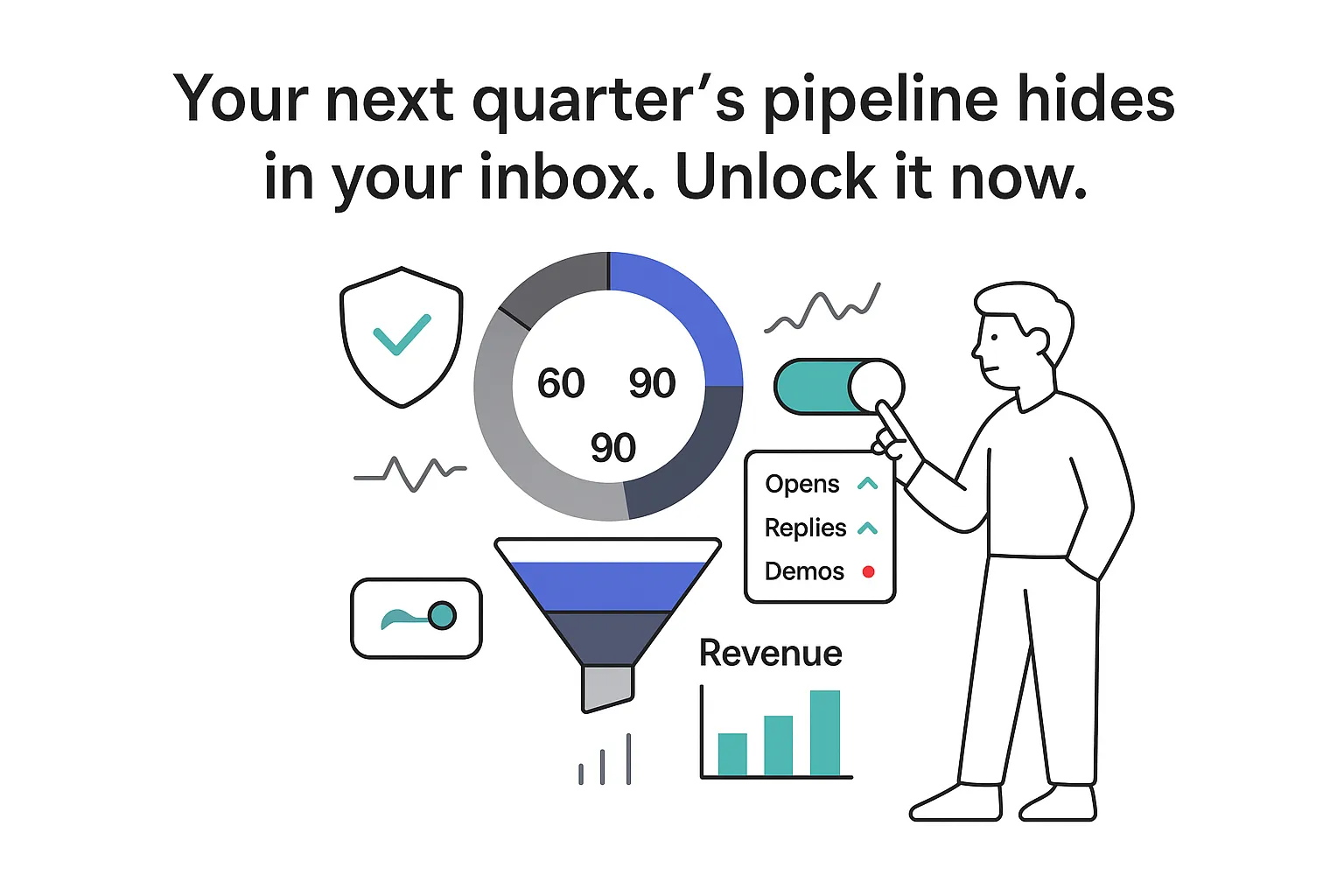You can grow a pipeline the hard way, throwing budget at ads and hoping the right buyers bubble up. Or you can pre-qualify leads and cut out the noise. Most B2B service CEOs know the pain. Too many demos. Too few wins. A calendar full of wrong-fit calls. It feels busy, yet revenue stalls. The fix is not more traffic or another campaign. The fix is better sorting before a salesperson says hello.
I treat qualification as a leverage point. It protects rep time, keeps CAC honest, and improves customer experience because only the right buyers advance. Here is how I approach it - practical, measurable, and easy to iterate.
Why qualify leads (and how to do it before a rep gets involved)
If reps keep talking to anyone with a pulse, two things happen. First, the sales team wastes time on the wrong leads. Second, selling to the wrong leads can backfire when churn, refunds, and low NPS show up later. Both hit CAC and profit.
I like to put numbers to it. Say reps hold 40 calls a month and only 5 are qualified. If each call eats 45 minutes plus prep, that is about 34 hours spent on people who will never buy or will not stick. At an all-in rep cost of 100 dollars per hour, that is roughly 3,400 dollars burned monthly - 40,800 dollars a year - before you factor in the opportunity cost of deals you did not touch.
The contradiction is real: you want volume to hit targets, yet volume without fit slows the team. Resolve it by adding a thin, smart layer that pre-qualifies at the source. In my experience, two simple assets do the heavy lifting:
- A high-signal quiz that routes based on answers
- A clean FAQ hub that removes basic friction and nudges visitors into fit paths
Together they protect bandwidth, raise close rates, and keep ad dollars honest. For deeper tactics on using quizzes to improve conversations, see this guide on sales calls.
A quick way to connect qualification with money:
- Pipeline quality ratio = qualified opportunities ÷ total opportunities
- Sales velocity = opportunities × win rate × average deal size ÷ sales cycle length (a widely used model in revenue operations circles)
ROI formula to keep it real:
ROI percent = (incremental revenue from a better-qualified pipeline − cost of the qualification program) ÷ cost of the program × 100.
Small change, big swing. If you pre-qualify leads and lift win rate from 18 percent to 26 percent while trimming cycle length by one week, you often see revenue jump without increasing spend. That is not theory. It is math.

What lead qualification really means
Lead qualification is how you decide who is worth a sales conversation right now, who needs nurturing, and who is not a match. You pre-qualify early with light questions. Then you confirm fit during discovery.
Popular frameworks, simplified for services work:
- BANT: budget, authority, need, timeline
- CHAMP: challenges, authority, money, prioritization
- MEDDPICC lite: metrics, economic buyer, decision criteria, decision process, pain, identify champion, competition - trimmed to what you can capture early
MQL vs SQL vs PQL in services:
- MQL (marketing qualified lead): shows intent signals like quiz completion, multiple visits, or gated content consumption - not necessarily ready for a pitch
- SQL (sales qualified lead): meets your minimum score and proves real need and timeline - ready for discovery
- PQL (product qualified lead): in services, treat this as a pilot, audit, or workshop participant who has tasted value - often the clearest path to close
Mini glossary to keep everyone aligned:
- ICP: your ideal client profile - the firms you can help best
- Intent: signals that show timing and problem severity, for example repeat visits to pricing or RFP pages
- Lead score: a number that blends firmographic data, behavior, and quiz answers
The quiz: high-signal questions, branching, and scoring
Quizzes are the friendly gatekeeper. They feel helpful, not pushy, when they center on the buyer’s situation. I aim for about 10 percent of the questions to be hard qualifiers. The rest should educate and deliver value. Here are ten prompts tuned for B2B services, plus branching tips and a sample scoring approach.
-
1) What is your current budget range for this type of service?
- Choices: under 2,500 dollars per month; 2,500 to 5,000; 5,000 to 10,000; over 10,000
- Branching: lower budgets route to resources or phased options; higher budgets unlock direct consult slots
-
2) What is your role in the decision?
- Choices: final decision maker; part of a buying group; influencer; researcher
- Branching: decision makers get priority scheduling; influencers get enablement content for internal pitch
-
3) What solution are you using today, if any?
- Choices: in-house; current agency; a mix; none
- Branching: in-house gets a migration path; current agency gets a comparison path; none gets an onboarding primer
-
4) What is your timeline to implement a solution?
- Choices: this month; next quarter; this year; just researching
- Branching: near-term timelines surface live calendars; long timelines trigger nurture with checkpoints
-
5) How severe is the problem right now?
- Choices: mission critical; important but not urgent; mild friction; curiosity
- Branching: mission critical gets fast track; mild friction routes to self-serve learning
-
6) Company size?
- Choices: 10 to 50; 51 to 200; 201 to 1,000; 1,001 plus
- Branching: larger firms see complex packages and case studies; smaller firms see streamlined paths
-
7) Tech stack compatibility?
- Ask about key tools you integrate with, for example CRM, analytics, ticketing, marketing automation
- Branching: compatible stacks move forward; mismatches get a candid note and alternatives
-
8) Industry?
- Choices mapped to your ICP list
- Branching: each industry gets tailored proof points and language
-
9) Primary use case?
- Choices: demand generation; support deflection; product launch; market entry; retention
- Branching: the use case triggers the right playbook and internal handoff
-
10) Geography or compliance needs?
- Choices: US only; EU; UK; APAC; multiple regions; compliance flags like SOC 2, HIPAA
- Branching: route to teams certified for those standards

Sample scoring rubric to pre-qualify without adding friction:
- Budget: 0, 5, 10, 15
- Role: 0, 5, 10, 10
- Timeline: 0, 5, 10, 15
- Problem severity: 0, 5, 10, 15
- Size and industry match: 0 to 15 combined
- Tech stack compatibility: 0 or 10
- Use case fit: 0, 5, 10
- Geography and compliance: 0 or 10
Scoring guidance:
- 60 to 100 points: high fit - route to sales immediately
- 35 to 59 points: nurture with targeted content; invite to a workshop later
- 0 to 34 points: educate with resources and revisit in 60 to 90 days
Branching tip: avoid opening with budget or role. Warm people up with pain and goals first. Then ask the harder questions near the end. That keeps completion high and qualifies without scaring away good buyers. For segmentation ideas based on quiz results or to automate follow-ups with an email sequence, these guides can help.
Build an FAQ hub that quietly qualifies (and boosts SEO)
A strong FAQ page trims support tickets, speeds up decisions, and nudges visitors toward the right path. It is self-serve, quick to scan, and always on. You can even use it to pre-qualify by linking answers to the quiz or to the right next step.
What a useful FAQ includes:
- Short questions in the language buyers use
- Crisp answers: one to three sentences first, with an optional learn more link
- Categories like pricing, security, process, timelines, results
- Smart internal links pointing to how it works, case studies, and the quiz
- A tiny search bar so users do not bounce
Where to place it:
- Footer on the homepage
- Pricing, features, and service detail pages
- Resource hub and help center
- Productized service pages and onboarding flows
- Confirmation pages after form fills
Internal linking tips:
- Use natural anchors, for example pricing for B2B SEO services or security checklist for audits
- Link down and across: each FAQ answer can feed a cluster page and the quiz, which helps you pre-qualify without a rep
- Add FAQPage schema so search engines can show rich results
SEO compounding effect:
- FAQs that match real questions win featured snippets, fill gaps general pages miss, and reduce pogo-sticking because people find what they came for
- Pair FAQs with a quiz: search brings the visitor, FAQs answer fast, the quiz sorts intent in minutes
For inspiration, review real FAQ hubs: Adobe Creative Cloud, Airbnb, Zendesk, and Airtable. Each shows clear categorization, concise answers, and strong self-serve patterns.
Signals I watch:
- Organic sessions to FAQ and quiz pages
- CTR on SERPs when rich results show
- Quiz starts, completion rate, and qualified conversion rate
Use AI without losing the human touch
AI can speed up grunt work, but it still needs a steady hand. I use it to mine questions, cluster themes, and draft first-pass answers. Then I rely on human reviewers to tighten accuracy, tone, and legal checks.
A simple workflow to pre-qualify at scale:
- Inputs: sales call notes, support tickets, live chat logs, on-site search, CRM fields
- AI clustering: group similar questions; tag by intent stage and category
- Drafting: generate short answers, suggest internal links, propose quiz prompts and branches
- Review: subject matter experts check facts, security, compliance, and phrasing
- Publish: update the FAQ hub, ship schema, and roll out the quiz or adjust branches
- Feedback loop: track bounce, time on page, quiz drop-offs, and lead scores; feed that back into the system
Governance must-haves:
- Hallucination checks with source citations in review notes
- Versioning and change logs
- A cadence for updates - monthly for hot categories, quarterly for the rest
- Performance dashboards that tie content to qualified pipeline
Dynamic branching ideas powered by AI:
- If a visitor selects industry equals healthcare, swap in industry examples and compliance proof
- If timeline equals this month, skip education and show a scheduling path
- If budget is unknown, use soft prompts to estimate investment bands
If you want to accelerate build-out, consider trying an AI quiz builder to speed up creation, then refine with human review.
A short, specific composite story
A composite mid-market IT services firm (120 employees) had a familiar pattern: high traffic, low signal. The sales team ran 55 discovery calls a month, closed 9, and spent most of the week repeating the same basic answers. The CEO wanted to pre-qualify leads without adding headcount.
The implementation:
- Built a public FAQ hub covering pricing, security, onboarding, timelines, and ROI, all tagged with schema and tight internal links
- Launched a 12-question quiz that used five pre-qualifiers late in the flow, scored leads, and auto-routed to different next steps
- Connected quiz data to CRM fields and set a simple scoring threshold for direct scheduling
- Tracked organic and quiz metrics in one dashboard and updated content every two weeks
Ninety days later:
- Organic sessions to the FAQ hub grew by about 48 percent, driven by snippets on timeline and security queries
- Quiz completion increased to 68 percent after moving budget and authority questions later
- Qualified demo requests rose from 9 to 17 per month, while total calls dropped to 40, saving roughly 12 hours of rep time monthly
- Win rate moved from about 16 percent to just over 24 percent, and CAC improved since paid spend held steady
It was not magic, and it was not instant. It was a simple system that pre-qualified leads and kept the team focused where it counts.
How I structure an FAQ that also qualifies buyers
Here is a practical path I follow. It is straightforward, and it rewards consistency.
-
Research the real questions
- Pull themes from sales calls, support tickets, and search data. Use exact phrases where possible.
-
Prioritize by volume and impact
- Start with questions that block deals or flood your inbox. Then fill in niche topics.
-
Write crisp answers
- Lead with a one-line answer. Add a short paragraph if needed. Link to a deeper page for those who want details.
-
Add schema and structure
- Use FAQPage markup. Keep a logical category structure so people can scan and find answers in seconds.
-
Place FAQs where visitors decide
- Footer, pricing, features, service pages, and confirmation pages. Make it easy to find without hunting.
-
Integrate your quiz
- Link from relevant answers to the quiz. Keep hard pre-qualifiers to about 10 percent, and do not open with budget or authority.
-
Measure and adjust
- Track traffic, search appearance, quiz engagement, drop-offs, and qualified conversion. Update monthly; faster if something breaks.
-
Keep tone and accuracy tight
- Review for clarity, brand voice, and compliance. Use AI to draft if you like, then let humans tune it.
If you want a starter template to move faster, grab this practical FAQ guide: Get it free.
Quick answers to common questions

How many pre-qualifying questions should I include in a quiz?
Keep hard qualifiers to roughly 10 percent of total questions. If you run a 12-question quiz, one or two budget or authority prompts is plenty.
Where should I place a quiz funnel on my site for best conversion?
Add it near pricing, on key service pages, and as a lightbox on exit intent for returning visitors. A link from relevant FAQ answers also works well.
How soon can I expect better lead quality from FAQs and quizzes?
If you already have traffic, you can see clearer conversations within a few weeks. Search gains from FAQs tend to build over 60 to 90 days as pages earn visibility.
Do I need a knowledge base as well as an FAQ page?
Not always. For many service firms, a focused FAQ hub plus a few deep guides is enough. If you have a complex productized service, a full knowledge base can reduce support and pre-qualify leads further. For structure ideas, browse Etsy or Nintendo.
Should FAQs be gated or ungated for SEO?
Keep FAQs ungated. They win search, reduce tickets, and set the stage for your quiz. Save gating for in-depth guides, templates, or audits.
How do I measure the ROI of lead qualification improvements?
Track changes in qualified demo requests, win rate, and sales cycle length. Tie those to revenue. Then subtract the cost of building and maintaining your FAQ hub and quiz. ROI percent equals incremental revenue minus cost, divided by cost, multiplied by 100.
A final note. Pre-qualify early, let content answer the basics, and give reps the space to sell. Simple, calm, and very effective.







.svg)